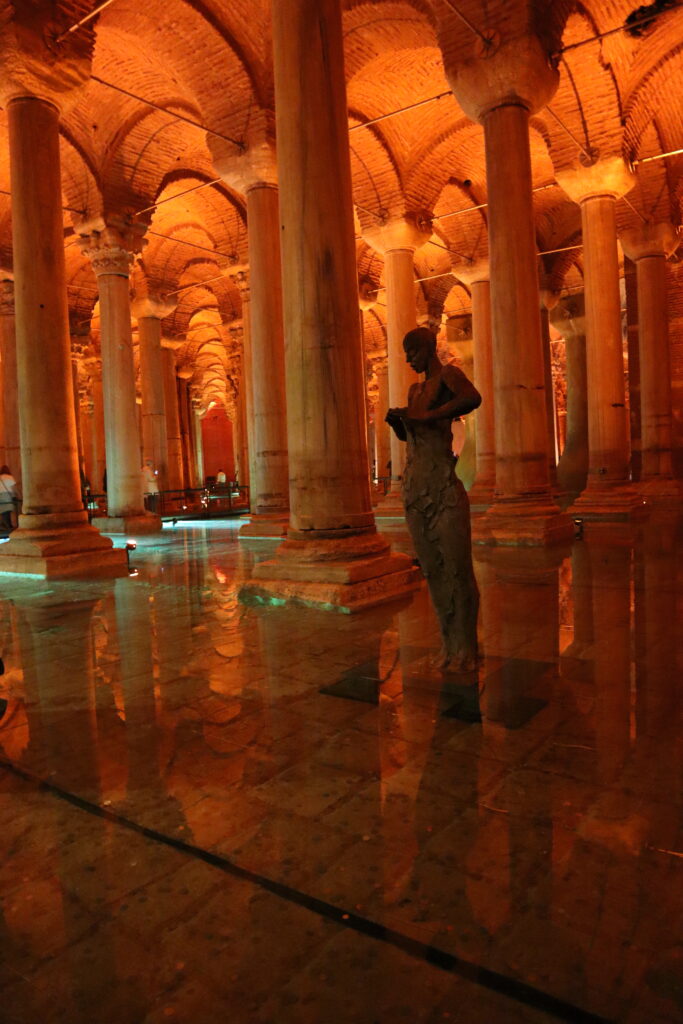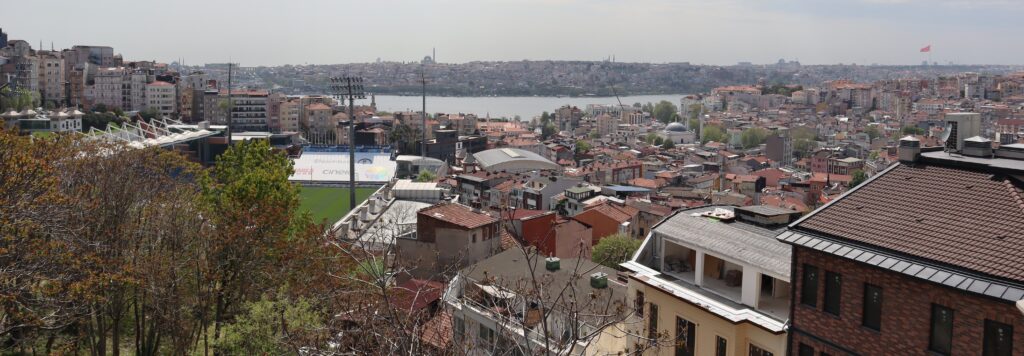Istanbul: A great city by any other name. And it has had a few. Other names, that is. Starting in the olden days, the site has been regularly inhabited since at least 3,000 BCE. The Greeks established the city of Byzantium in the 7th century BCE. Later, the Roman emperor Constantine established his capital here in 330 CE, naming it, naturally, Constantinople. After the decline of the Romans, Constantinople was the capital of the Byzantine Empire until 1453. Then, with the conquest of the Ottomans, it became the capital of the Ottoman Empire until 1923. In 1930, Turkey officially changed the city’s name to Istanbul. And the rest is (recent) history.

For bonus points, in addition to the Ottoman Empire, how many empires fell as a consequence of the World War I? For double points, name them.
As for Istanbul today, it is lively, filled restaurants, bars, shops, music, and a constant flow of pedestrians along the main shopping roads. At least it is in the Taksim area where I stayed. Other neighborhoods might have fewer restaurants and no bars, but you’ll still find people shopping.
I arrived in Taksim late on Tuesday evening, and was amazed to find the city buzzing. It seemed that every restaurant and bar had live music. The only time the actions slowed was for the Presidential elections, when the sale of alcohol is prohibited. And yes, during run-off elections. (If no one receives more than 50% of the vote, the top two candidates move on to a run-off election.)
The main attraction on the European side of Istanbul—the city is divided by the Bosporus Strait, which separates the continents of Asia and Europe—is of course the Ayasofya (Turkish name for the Hagia Sophia). Built as an Orthodox Christian Church in 360 CE, it was destroyed by fire in 404 CE. The church was rebuilt in 415 CE, and then, you guessed it, destroyed by fire in 532 CE.

Well, in 537 CE. That when it was built once again, and it still stands. (Monty Python fans can insert “What, the curtains?” joke here.)
When the Ottomans captured Constantinople in 1453, the structure was renovated into a mosque. Mostly, it involved removing Christian art and inserting Islamic art. And so, after 900 years as a church, the Hagia Sophia became a mosque. And that is how we find it today. It is heavy and imposing, but not dark or brooding, and it is very, very impressive. A 180-foot-high witness to 1700 years of history.

Another of the top sights is the Basilica Cistern (or Yerebatan Sarayı), which dates back to at least the emperor Constantine (4th century) and likely to Hadrian (2nd century). Built to provide water to the hilltop city, it is an amazing feat of architecture. Today, it is a tourist attraction and plays up its repetitive structure reflected in the shallow pool of water. They have enhanced the experience with added sculptures and ever-changing mood lights. It is a cool “must see,” but really just for a few minutes and then you are ready to go.
And speaking of ready to go, a word about leaving Istanbul. I decide to spend some time in Izmir, a bit further south, in the middle of the country. I had a choice of car, bus, train, or plane. Car is fast, but fuel is expensive. Bus is slow, but cheap. Train is a very, very, very long journey. Plane is fast and fairly cheap. Ok. Plane it is. Now, which airport?
I stayed on the European side of the strait, and had arrived via Istanbul’s new airport (IST). It’s not close to the city, but a straight-forward journey and can even be reached by the Metro. But I decided to fly out of the old airport (SAW) on the Asia side of the city, instead of IST on the Europe side. Most of the cheaper airlines, and the domestic flights, depart from SAW.
Traffic is a nightmare when crossing over the water. I allowed 3 hours for what should have been a 45-minute journey.

From where I stayed, there would have been virtually no traffic heading to IST. There was, however, bumper-to-bumper traffic heading to SAW. At least up to the bridge to cross the strait. Travelling the other direction, from Asia to Europe, it was bumper-to-bumper until the strait, and then nothing after that. In hindsight, because I was staying on the Europe side of strait, I would have either flown from European side, or taken a bus. The bus would have been cheaper and just as quick considering the traffic factor.
Live and learn.
Finally, Let’s keep the straits straight: don’t confuse the Bosporus Strait with the Dardanelles Strait.
The Bosporus Strait connects the Marmara Sea with the Black Sea, cutting Istanbul in half. Turkey, of course, surrounds the whole of the Marmara Sea, while the Black Sea boarders Turkey, Russia, Bulgaria, Romania, Georgia, Moldova, and Ukraine (at the time of this publication).
The Dardanelles Strait connects the Aegean Sea with the Marmara Sea and was the site of Winston Churchill’s much maligned WWI Naval incursions.
*****
SPOILER ALERT: Four empires did not survive WWI: the Russian Empire fell in 1917, the German and the Austro-Hungarian in 1918, and the Ottoman in 1922.
